
The most common diseases and parasitic pests of mandarin trees
Our advice for treating and preventing these issues affecting mandarin trees
Contents
The mandarin tree (Citrus deliciosa) captivates with both the elegance of its glossy foliage and the abundance of its sweet, fragrant fruit. While seemingly resilient at first glance, it harbours a notable susceptibility to a wide range of fungal, bacterial or viral diseases, as well as pests. This vulnerability, often insidious, can quickly compromise the tree’s vigour, impair fruit quality or, in the most severe cases, lead to the complete decline of the tree.
Discover our advice for identifying, treating and preventing the most common diseases and parasitic organisms affecting mandarin trees.
What are the most common diseases of mandarin trees?
Whether grown in the ground or in a pot, a mandarin tree is a citrus tree relatively susceptible to a number of diseases that can pose serious health threats.
Before discussing these various diseases, it’s important to note that yellow dragon disease, also known as Huanglongbing (HLB), is not present on the European continent. This bacterial disease is transmitted by psyllids and is one of the most serious affecting citrus trees.
Phytophthora Gummosis
Gummosis is a fungal disease affecting the trunk and branches of mandarin trees, often caused by fungi of the genus Phytophthora. It is favoured by conditions that are both warm and humid, as well as wounds on the tree.
Symptoms
- Oozing of viscous, amber-coloured gum on the trunk or branches
- Discolouration and cracking of the bark, appearing as scaly necrosis
- Gradual dieback of twigs, yellowing of foliage.
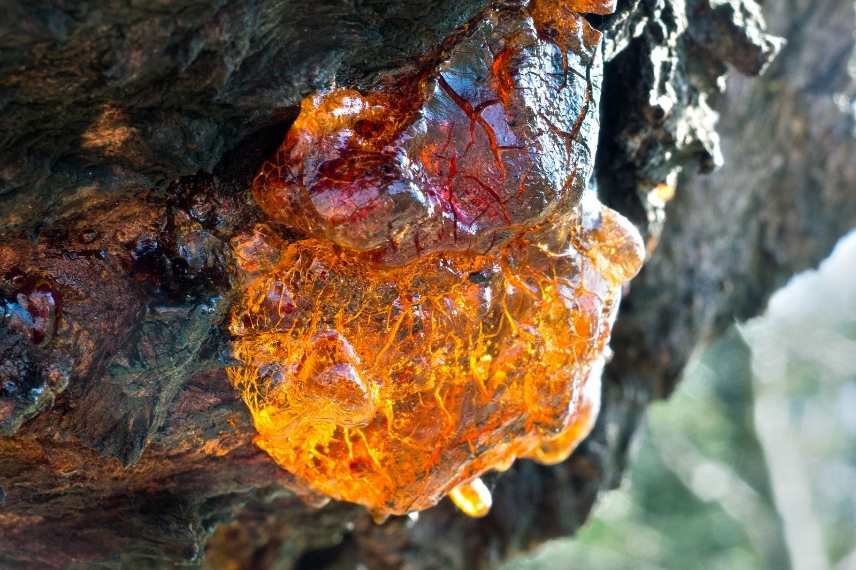
Symptoms of gummosis
What to do?
- Remove infected parts by pruning back to healthy wood
- Apply a copper-based fungicide such as Bordeaux mixture to affected areas
- Ensure good soil drainage to avoid excess moisture.
Tristeza
Tristeza is a viral disease caused by the Citrus tristeza virus (CTV), transmitted by brown citrus aphids. It is particularly destructive for trees grafted onto certain sensitive rootstocks like sour orange. This virus settles in the innermost part of the tree and disrupts sap circulation.
Symptoms
- Rapid yellowing and leaf drop
- Fruits are small and deformed
- Appearance of vertical streaks and holes in the bark below the graft union
- Reduction in trunk diameter at the graft union
- Rapid decline of the tree.
What to do?
As there is no effective treatment, control relies on preventive measures. If a mandarin tree is diseased, it is recommended to uproot and destroy it.
- Monitor aphid populations to limit spread
- Avoid introducing uncertified plant material.
Bacterial Canker
Bacterial canker, caused by Xanthomonas axonopodis pv. citri, causes lesions on leaves, fruits and branches, affecting harvest quality. Disease spread is favoured by rain splashes or watering, especially if the mandarin tree has any wounds on leaves, stems or fruits.
Symptoms
- Brown spots surrounded by a yellow halo on leaves and fruits
- Corky lesions on branches
- Premature leaf and fruit drop.
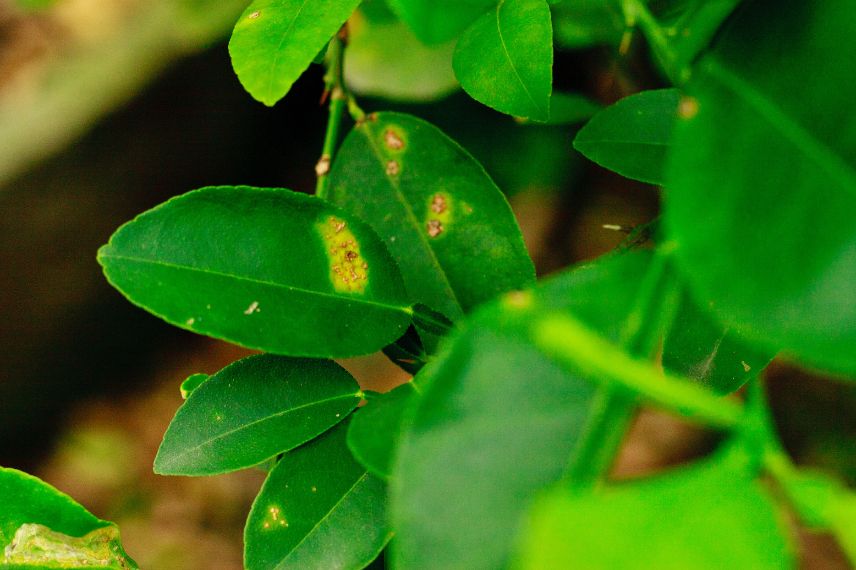
Bacterial canker of citrus trees
What to do?
As no treatment proves effective, prophylactic measures must again be used:
- Remove and destroy infected parts
- Apply preventive copper-based treatments such as Bordeaux mixture
- Avoid mechanical wounds that facilitate bacterial entry.
Sooty Mould
Sooty mould is a blackish, opportunistic fungus that develops on honeydew secreted by insects such as aphids or scale insects. Although it doesn’t penetrate plant tissues, it hinders photosynthesis.
Symptoms
- Black, soot-like deposits on leaves, branches and fruits
- Sticky appearance of affected surfaces
- Reduced tree vigour.
What to do?
- Control populations of honeydew-producing insects
- Clean leaves with soapy water.
- Improve air circulation around the tree.
Chlorosis, a Deficiency Rather Than a Disease
Chlorosis is actually a false disease manifested by yellowing foliage. Chlorosis is caused by iron or magnesium deficiency, itself due to overly high pH or depleted substrate. It is sometimes caused by bacterial infections.
Symptoms
- Yellow discolouration of leaves, often between veins
- Reduced tree growth
- Decreased fruit production.
What to do?
- Apply iron chelates and special citrus fertiliser
- Amend the substrate
- Monitor for additional symptoms to rule out infectious disease.
What are the most common pests affecting mandarin trees?
Mandarin trees are affected by the same pests that attack most citrus trees. These parasitic insects often appear when growing conditions are not properly maintained.
Scale Insects
Scale insects are persistent sap-sucking insects that attach themselves to leaves and branches, weakening the tree and promoting the development of sooty mould.
Symptoms
- Presence of small shield-shaped insects or cottony clusters on plant surfaces
- Yellowing and leaf drop
- Appearance of sooty mould due to secreted honeydew
What to do
- Clean infested areas with a cloth soaked in soapy water
- Introduce natural predators like ladybirds
- Spray garlic decoction or nettle purin on the foliage, or as a last resort, a natural pyrethrum-based insecticide.
Aphids
Aphids, particularly the black citrus aphid (Toxoptera aurantii), are sap-sucking insects that colonise mandarin tree shoots in dense colonies. Beyond their weakening effect, these pests also transmit viruses like tristeza.
Symptoms
- Presence of dense colonies on young leaves and stems
- Deformation of young shoots, curled or blistered leaves
- Production of honeydew promoting sooty mould growth.
What to do?
- Remove young colonies with a strong jet of water at first appearance
- Encourage natural predators like ladybirds, lacewings or hoverflies
- For heavy infestations, spray black soap mixed with water or nettle decoction, ensuring thorough coverage of leaf undersides.
Citrus Leaf Miner
The citrus leaf miner is the larva of the moth Phyllocnistis citrella that tunnels under leaf epidermis, causing deformations and weakening the tree.
Symptoms
- Presence of sinuous tunnels on leaves
- Curling and deformation of young leaves
- Reduced shoot growth.
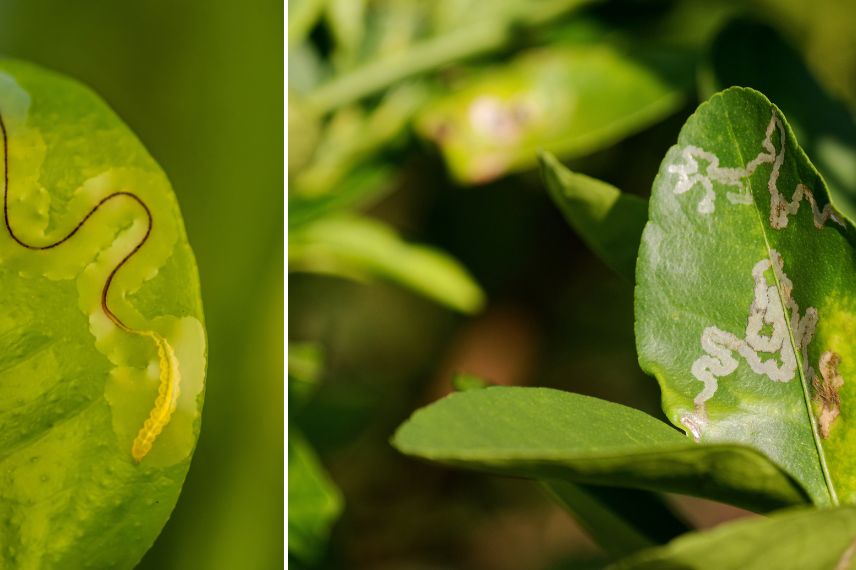
Symptoms of citrus leaf miner presence
What to do?
- Remove and destroy infested leaves
- Use pheromone traps to monitor populations and capture males.
Fruit Fly
The Mediterranean fruit fly (Ceratitis capitata) is a major scourge of citrus orchards. Females lay eggs in ripening fruit; larvae develop in the flesh, causing rotting. Invisible at first, this parasite often causes significant harvest losses.
Symptoms
- Small visible punctures on fruit surface, often surrounded by discoloured areas.
- Softening and premature fruit drop
- Presence of whitish larvae inside fruits.
What to do?
- Install pheromone traps at season start to capture males
- Systematically collect and destroy fallen or suspect fruits.
Whiteflies
Whiteflies are tiny flying insects that gather on leaf undersides. Bemisia tabaci and Trialeurodes vaporariorum are the most common species on citrus trees. They feed on sap, weaken trees and excrete sticky honeydew that promotes sooty mould.
Symptoms
- Cloud of tiny white flies taking flight at the slightest disturbance
- Presence of sticky honeydew and sooty mould on leaves
- Yellowing and general weakening of foliage.
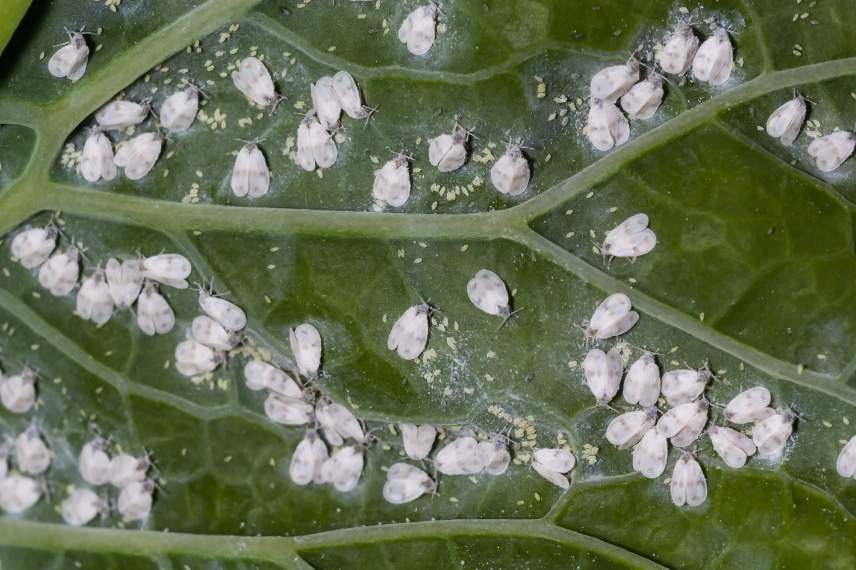
Whiteflies
What to do?
- Introduce or encourage natural predators like Encarsia formosa (parasitic wasp)
- Spray black soap or natural insecticide, focusing on leaf undersides
- Set up yellow sticky traps to monitor adult populations.
Best cultivation practices for a healthy mandarin tree
To prevent your mandarin tree from falling prey to numerous diseases and parasitic organisms, the best strategy remains prevention and good cultivation practices.
- Regularly amend the soil and avoid overwatering, especially during cooler periods. However, watering should be regular, but in perfectly drained soil.
- Prune to open up the branches and improve air circulation. This pruning should be done carefully, with disinfected tools, to avoid inadvertently introducing pathogenous agents.
- Regularly inspect the leaves, young shoots, fruits, and trunk to quickly spot any abnormalities.
- Use pheromone traps or sticky traps to monitor the appearance of pests.
- Encourage biodiversity in the garden to increase the presence of beneficial insects like ladybirds, hoverflies, or certain bird species.
- Subscribe!
- Contents
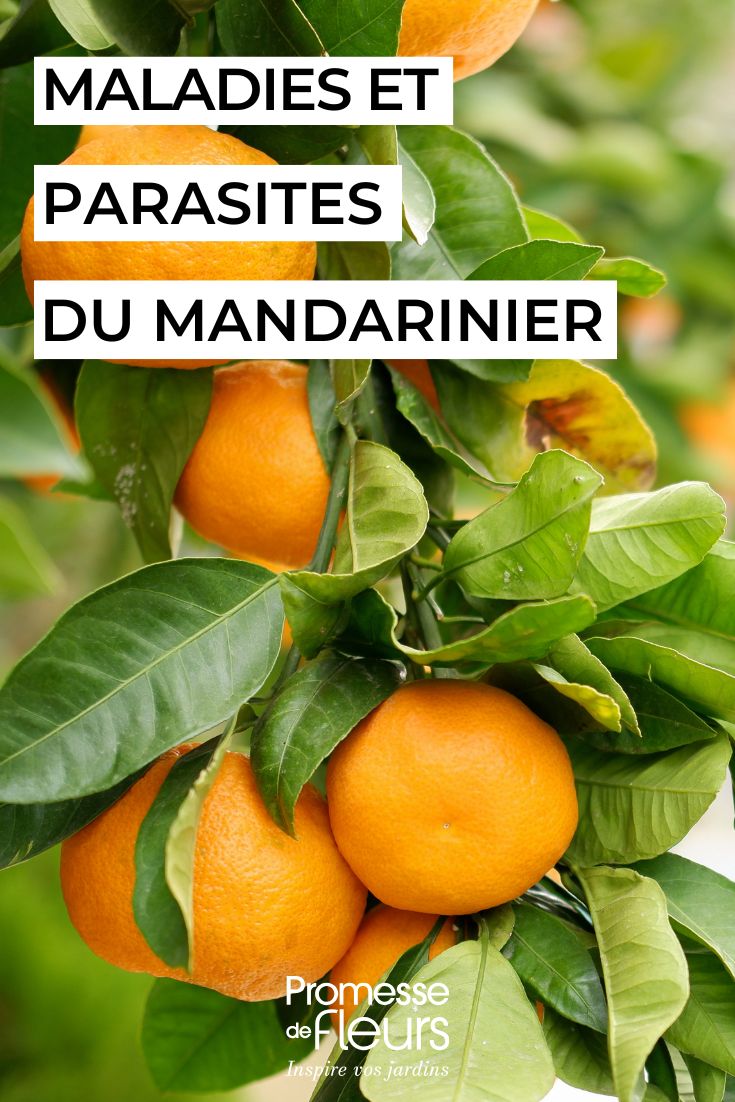































Comments